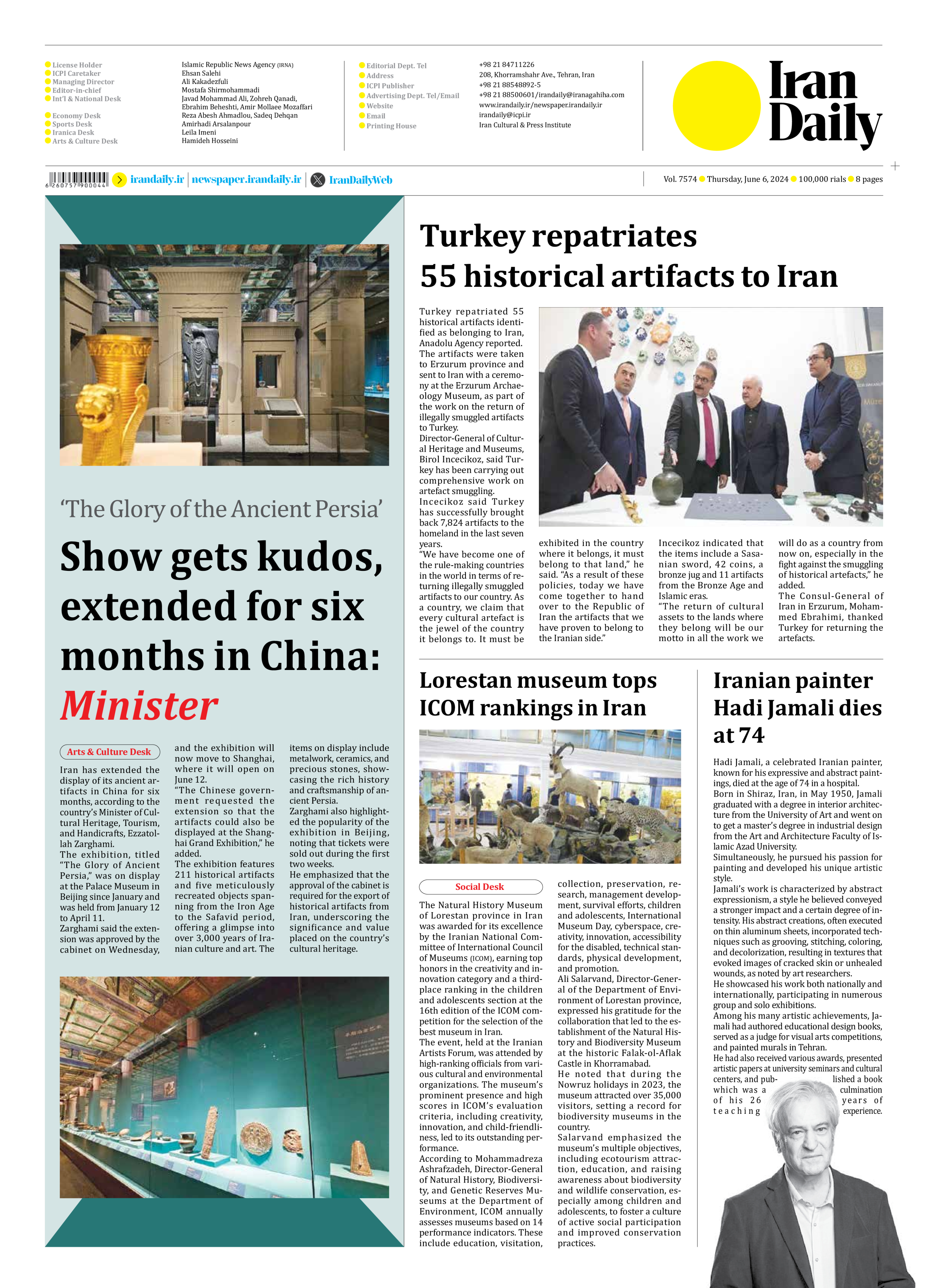
Copy in clipboard...
Lorestan museum tops ICOM rankings in Iran
The event, held at the Iranian Artists Forum, was attended by high-ranking officials from various cultural and environmental organizations. The museum’s prominent presence and high scores in ICOM’s evaluation criteria, including creativity, innovation, and child-friendliness, led to its outstanding performance.
According to Mohammadreza Ashrafzadeh, Director-General of Natural History, Biodiversity, and Genetic Reserves Museums at the Department of Environment, ICOM annually assesses museums based on 14 performance indicators. These include education, visitation, collection, preservation, research, management development, survival efforts, children and adolescents, International Museum Day, cyberspace, creativity, innovation, accessibility for the disabled, technical standards, physical development, and promotion.
Ali Salarvand, Director-General of the Department of Environment of Lorestan province, expressed his gratitude for the collaboration that led to the establishment of the Natural History and Biodiversity Museum at the historic Falak-ol-Aflak Castle in Khorramabad.
He noted that during the Nowruz holidays in 2023, the museum attracted over 35,000 visitors, setting a record for biodiversity museums in the country.
Salarvand emphasized the museum’s multiple objectives, including ecotourism attraction, education, and raising awareness about biodiversity and wildlife conservation, especially among children and adolescents, to foster a culture of active social participation and improved conservation practices.







